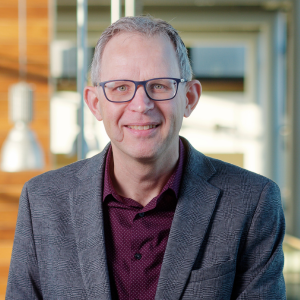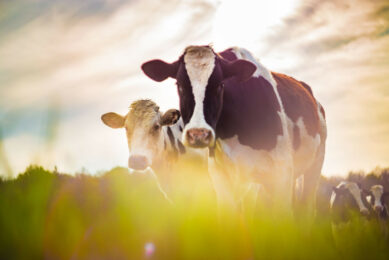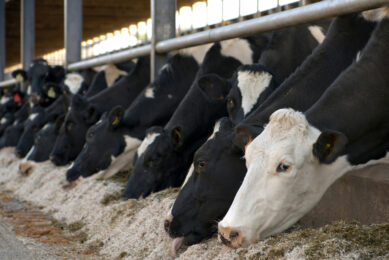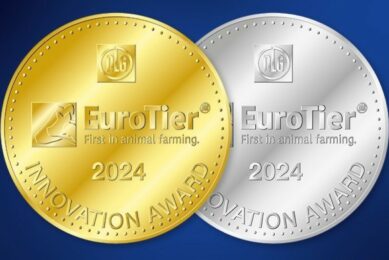Review | Sustainable feed production – where do phytogenics fit in?
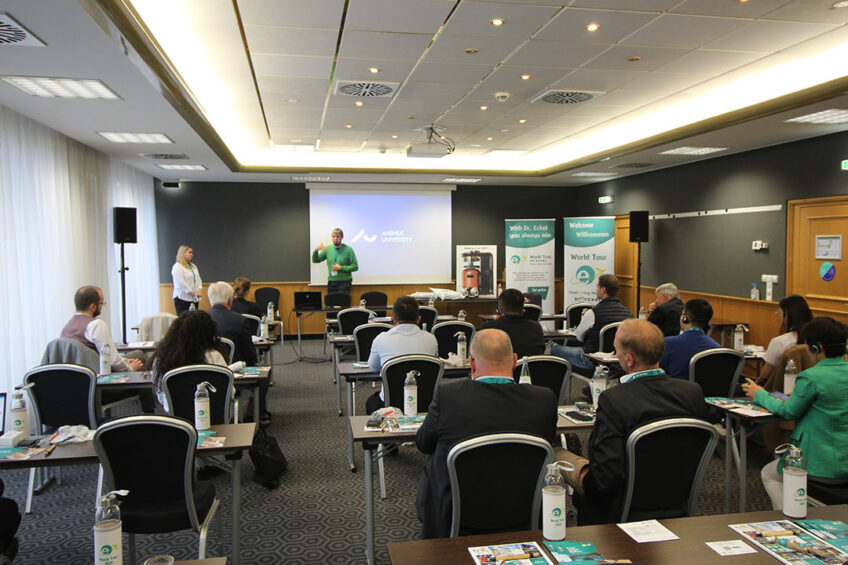
The future of animal nutrition was discussed in the last stop of the “Connecting the world” tour of German-based animal nutrition company Dr Eckel. After stops in Thailand, Indonesia and Brazil the tour came to a halt in November 2022, in Braunschweig, Germany, ahead of EuroTier 2022.
About 40 animal nutrition experts from all over the world gathered to hear ideas revolving around sustainability and animal welfare in feed production.
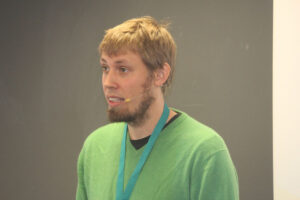
They saw Dr Carsten Malisch kick off the conference. This researcher from Aarhus University in Denmark had a very interesting presentation in which he discussed several bioactive compounds, how humans have been using those for centuries and – nothing is ever straightforward – even within types of compounds there are differences.
He introduced “plant secondary metabolites” (PSM), which are components in plants which are not essential for its growth or survival, but can nevertheless be useful. Cafeine, he introduced as an example, or opium, as well-known elements. In this particular presentation he spent most attention talking about tannins – and discussed their effects on ruminants, as that animal species is Dr Malisch’ speciality. Tannins, he said:
- Have anthelmintic effects (dealing with nematodes);
- Have anti-inflammatory effects (the effects can also be seen in monogastrics);
- Prevent bloating; and
- Reduce methane production.
All in all, at least in cattle, the substance offers more than enough to be a good alternative for antibiotic growth-promoters, he said.
He closed off by summing up a series of plants that have promising PSM, including chicory, jackfruit and the quebracho tree. Funnily, he said, the quebracho tree does have high tannin content, yet the anthelmintic and anti-inflammatory effects of these tannins would be limited if any at all he said. That is why ongoing research is necessary.
Successfully feeding the future
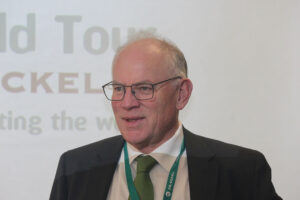
The next speaker was Dr Bernhard Eckel, who expanded on the topic of phytogenics, in an attempt to answer the question how they can facilitate successful feeding of the future. As one of the owners of the animal nutrition company, he painted a slightly gloomy trend with hardly any rain and an ever-growing population. Can the trend be stopped?
He said that management holds the key to all this – feeding management, farm management and also animal management. Sincere attention for those components leads to both animal welfare as well as efficiency, he argued.
He placed things in perspective of goals by the United Nations’ sustainability development goals, and how the company’s product line could support those:
- No hunger (with feed optimisation up to 4% more poultry meat can be produced)
- Health and well-being (with feed optimisation animals will be more resistant, will antibiotic usage be lower, and thus indirectly also human health)
- Sustainable production and consumption (with feed optimisation 12.3 million tonnes of feed can be saved).
Enhancing animal welfare
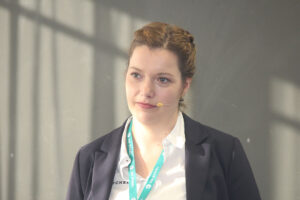
Next onto the stage was Anne Möddel, senior technical sales manager for Dr Eckel. As the company often emphasises the animal welfare aspect of its product range, her focus was to demonstrate that the product line AntaPhyt (based on, e.g. hops and liquorice) lead to welfare effects. She mentioned:
- Better air quality because of dryer litter quality, leading to less ammonia generation;
- Cleaner animals, as the faeces is stable;
- Improved hygiene for the same reason; and
- Fewer foot pad lesions.
To emphasise the economic component of the story, she shared various trial results with broiler chicks, heavy breeder hens and commercial laying hens. In the last example involving 50,000 broilers, she said that more health and welfare had led to over 82,000 eggs extra.
Introducing the IFF
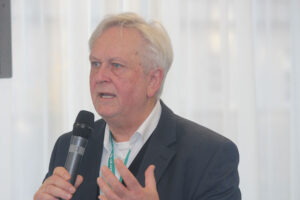
The following 2 speakers introduced the nearby Research Institute of Feed Technology (IFF), which is located in Braunschweig, where the event was held as well. In a short contribution, professor Werner Sitzmann, acting director of the institute, explained about the institute, which was founded in 1961. It represents many known and well-known feed companies from Germany and beyond, and currently has a budget of € 1.4 million for researching what the impact machines have on feed production. He asked rhetorical questions, like what effect residence time, particle structure, or steam addition has – during processing – on the feed quality. “This is where we see our USP. Everything depends on processing.”
Sustainable feeding solutions
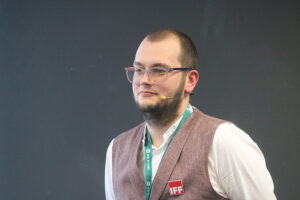
His IFF colleague, Patrick Sudwischer, then explained what, in his view, would make sense to do when sustainably feeding the world. He had 5 messages for the attendees to remember.
- He pointed out that the use of local protein sources can make an active contribution to the reduction of greenhouse gases. He touched, for instance, on slaughter by-products, and locally grown soybeans (Donau Soja) and also mentioned plant-based protein sources, preferably those that are resistant to drought. Legumes he also mentioned as an example.
- He pointed to circular economies which should be established.
- The best ways to reduce micro-organisms, he said, are well-chosen farm conditions.
- He spoke about insect materials, like, for instance, the Black Soldier Fly. The larvae can only be fed fresh or processed, he explained. He shared research that wet processing actually yields lower contamination levels of Enterobacteriaceae than when dry processing is being applied. In other words – the method of processing determines the hygiene status of the feed.
- Research on innovation in treatment processes should receive more attention.
Phytogenics for the future
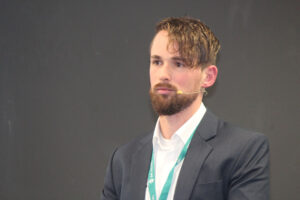
Closing off the event was Dr Viktor Eckel – the next generation in the Eckel family. He summed up three trends that the future holds for the world of animal feed. Animal welfare would be one, he said; sustainability is the next, with a third being innovation. Feed of the future, he said, needs a multi-factorial approach.
He discussed the phases of innovation, from an impulse phase to evaluation and eventually technology transfer. The impulse phase, he said, could be any development, like pressure on raw material supplies, or increased demand for animal protein. In terms of evaluation, he discussed how hops are being used for food, pharmaceutical and technological applications. The leftovers, pomace (full of polyphenols), can also be used as his company shows. Technological transfer, he said, then becomes visible in the company’s Ecknowlogy programme, sharing knowledge and technology.


